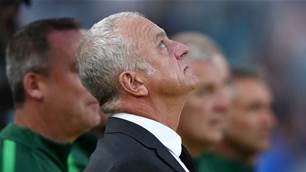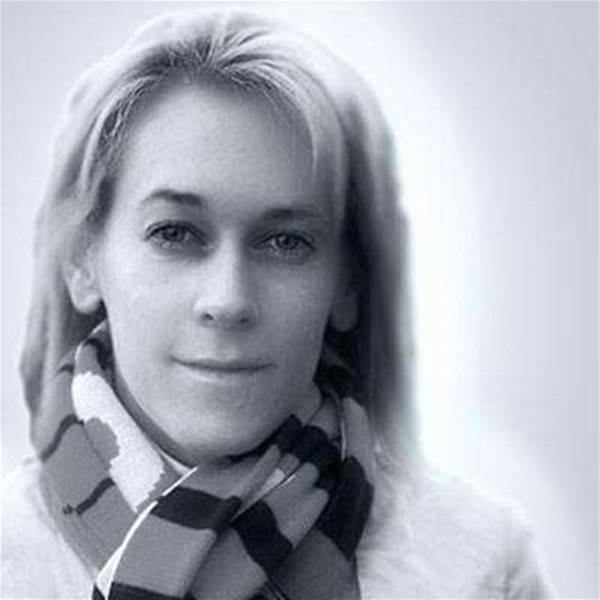Every time I finish writing this, some new stranger-than-fiction antics pop up. So here we go…
I’ve written this blog about 27 times, but every time I just about hit send, some stranger-than-fiction antics pop up. So here we go …
By antics, I refer to those of former club owners Clive Palmer and Dan Borislow. The former you can’t not be familiar with, as a football fan, as an environmentalist, or even as someone who values the integrity of appointing our so-called ‘national treasures’. The latter is someone in the US whose actions mirror (and whose name evokes similar reactions to) Palmer’s.
Bear with me while I explain.
2012 was supposed to be a quiet year for women’s football in Australia, with the impending Olympics an open wound due soon to have salt rubbed in it. Instead I’ve largely spent the first months of the year busier than ever and brimming with a kind of we’re-on-the-edge-of-something-big hope.
Season 4 of the Westfield W-League was outstanding. Social media use reached critical mass in 2011, with players and fans alike embracing its reach and versatility. Suddenly women’s football, which has always had less funding and less exposure and which has always had to ‘do more with less’, was not at such a promotional or engagement disadvantage.
Then came Palmer and Borislow.
I won’t catalogue the recent Palmergate, which saw Palmer sink A-League team Gold Coast United in the manner he hopes his ill-named Titanic II boat won’t. Instead I’ll make mention of one smaller, lesser-reported, lesser-examined aspect: Palmer’s promise to focus on women’s football.
You know, the focus he pledged only after he was stripped of a licence and after three seasons where could have requested to field a Gold Coast-branded Westfield W-League team, but didn’t.
Huh?
I doubt Palmer knows that a sizeable contingent of top-tier Westfield Matildas and Westfield W-League players call the Gold Coast home, not least Tameka Butt, Elise Kellond-Knight, Aivi Luik, Casey Dumont, Hayley Raso, and Mackenzie Arnold.
The first four commute multiple times a week to train with and play for Brisbane Roar, while the latter two moved interstate for the recent season. It would be fair to say that the Gold Coast would attract interest from many (if not all) of these players were they to set up a W-League team. And such a team would be a serious finals contender.
I acknowledge, of course, that most of the W-League teams are run by state football federations, but we all know that the investment in such a team would be well within Palmer’s reach. No team has, after all, even after four seasons, come close to challenging its $150,000 salary cap—small change for him and a chance to offset some of the GCU-related ill will.
I’ll also say that by leaving the FFA with no choice but to rescind his licence, Palmer’s made it infinitely harder for the Gold Coast in some form to even consider fielding a team. Without an A-League counterpart with which to co-brand and take advantage of collaborative, community-developing opportunities, a W-League team will be difficult to achieve. I wouldn’t call that supporting women’s football.
Worse, the women’s game was already derailed once worldwide this year (which is no mean feat given that we’re just a few months in). Derailed, no less, by a rich, egomaniacal guy stripped of his licence for reportedly heinous behaviour.
Sound familiar?
Season 4 was the first time I wasn’t actually sad to see the W-League’s end because a stack of players were heading to exciting overseas prospects. Westfield Matildas stars Kyah Simon and Tameka Butt, for example, had signed with the Women’s Pro Soccer (WPS) league’s Boston Breakers (The ‘pro’ of WPS implies just that: a league where players are paid as full-time professionals. It’s a model to which Australian women’s football aspires).
So it was gutting to wake up to the news just days after the W-League’s end that the WPS was suspending play for the entire 2012/13 season. The reason? magicJack team owner Dan Borislow, who’d had his licence revoked for repeatedly contravening licence agreements, was threatening legal action (The details are murky and still emerging, but at least one of his former players has blogged about not receiving medical treatment that she was entitled to under his care).
The WPS had already been on shaky ground—it had had to apply for special dispensation to run the league with a reduced number of teams with Borislow’s team’s departure. With the Damocles sword of prohibitively expensive legal action hanging over their heads, the league’s organisers realised they couldn’t afford the risk. They’ve since resurrected a skeleton WPS Elite league to get around the Borislow difficulties, but who knows quite what will happen or what’s around the corner once the season kicks off in coming weeks.
There are eerie parallels between his and Palmer’s destructive if-I-can’t-have-it-no-one-can attitudes. Attitudes that are enabled and fuelled by money, and without any apparent consideration for what’s best for football and the footballing community. We need owners with deep pockets until we can effectively monetise the league. But we also need owners who, as one friend aptly articulated it, don’t think that just because they can dig big holes in the backyard that they’re experts in any and every area.
Which returns me to the we’re-on-the-cusp-of-something-big hope. If the aforementioned Palmer and Borislow incidents had happened in previous years, it’s unlikely that they’ve had been reported, much less contested. Now, though, they set social media alight. Fans and players alike refuted the claims and showed their support for women’s football.
Better, they’ve taken to promoting themselves. In fewer than 12 months Girls FC (www.facebook.com/girlsfc and @FFAGirlsFC, for which I need to issue the disclaimer that I’m the editor), has grown from 0 to over 5600 members and the number one women’s football community in Australia. It’s done so purely through a social media and online presence, with the help of players and fans alike, who’ve embraced it specifically and social media more broadly.
The FAWSL (the UK version of the W-League) kicked off a few weeks ago and they’ve taken things to the next level, both appointing players as Digital Ambassadors and printing players’ Twitter handles on their shirts. Their philosophy mirrors ours: That self-promotion utilising free social media tools is the key to women’s football’s success. I’ll be watching the US and the UK’s leagues with interest in coming months. I also, despite Palmer and Borislow’s prior actions, see Season 5 of the W-League being bigger, better and, by utilising social media, yielding even more opportunity.
Related Articles

Backlash over Fox Sports new season launch

W-League, A-League set for world-first equal marketing split












